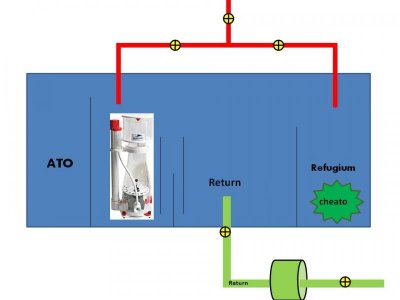Dantique
New member
So I came across a free 100G acrylic tank for free. I have been wanting to move my sump to the basement and expand. Current tank is a 90 with a Durso Overflow. I was a FOWLR for several years then moved into softies and looking to advance slowly. I have searched uncountable number of threads and websites looking for design tips. To be honest, I am just plain old confused and overwhelmed with the variations. :headwally:
What I would like: I would like a section for top off, skimmer and refugium. Dimensions for the 100g acrylic are 72"w, 18"d, 19"h. I plan on using an external pump (haven't decided...:more confusion) I think my main concern is intake volume and providing enough return volume. My tank does not have an emergency overflow..ugg How do I prevent overfilling the main display in case of a return blockage? Is this 100g too big?
Other questions: compartment sizes such as return, intake/skimmer and refugium.
I have several other questions but this is a start.
Thanks For taking the time to read and help!
What I would like: I would like a section for top off, skimmer and refugium. Dimensions for the 100g acrylic are 72"w, 18"d, 19"h. I plan on using an external pump (haven't decided...:more confusion) I think my main concern is intake volume and providing enough return volume. My tank does not have an emergency overflow..ugg How do I prevent overfilling the main display in case of a return blockage? Is this 100g too big?
Other questions: compartment sizes such as return, intake/skimmer and refugium.
I have several other questions but this is a start.
Thanks For taking the time to read and help!

